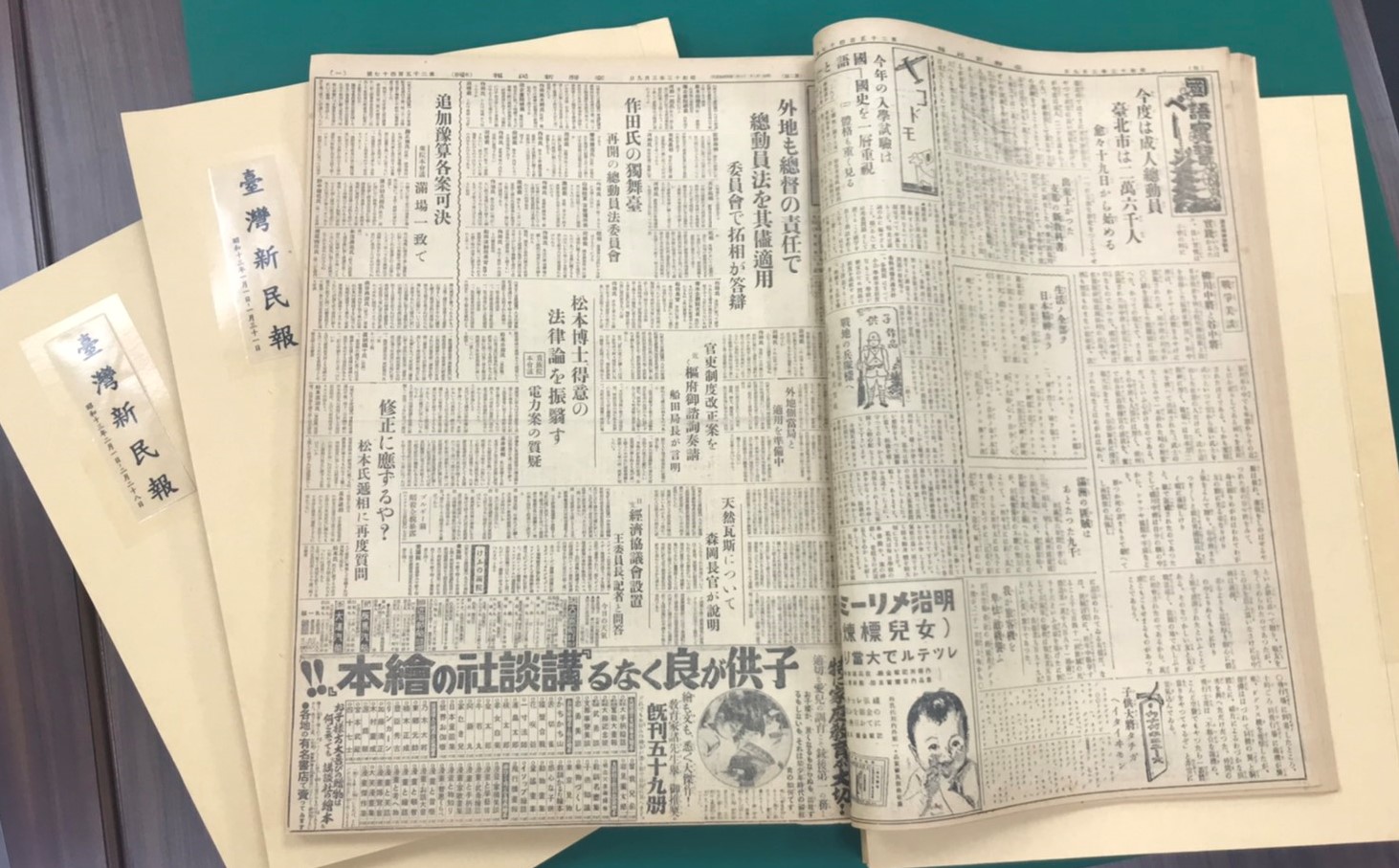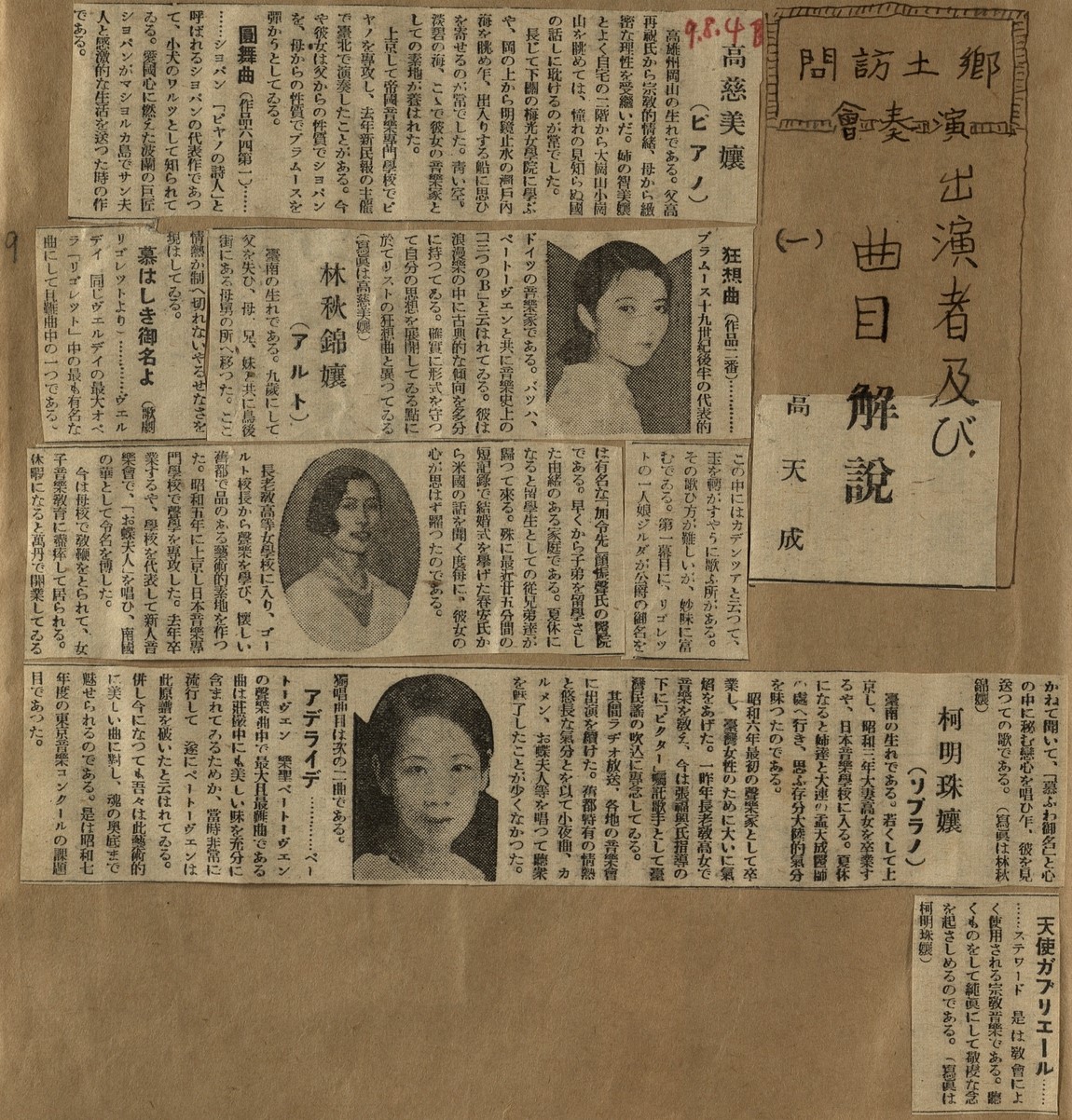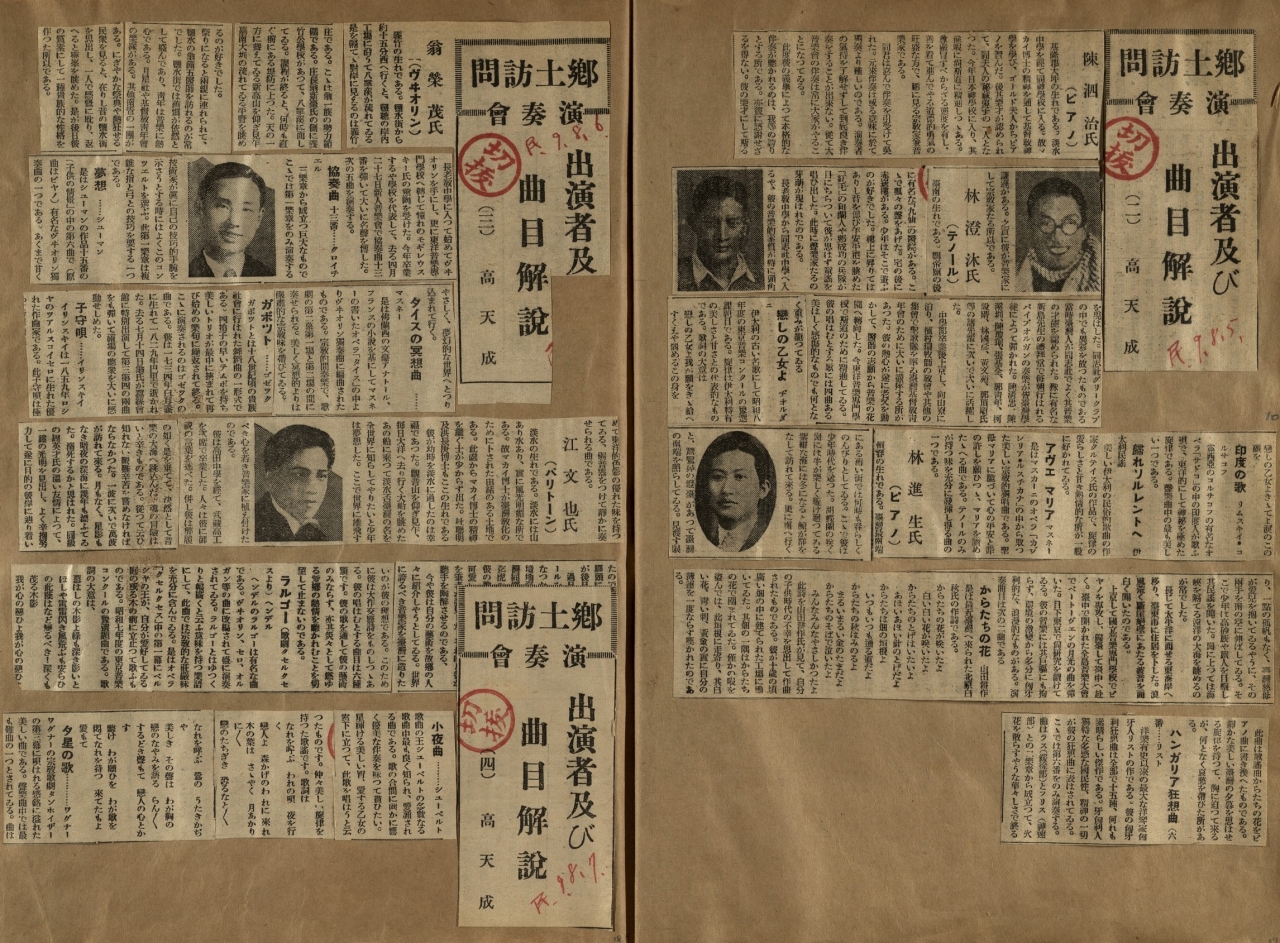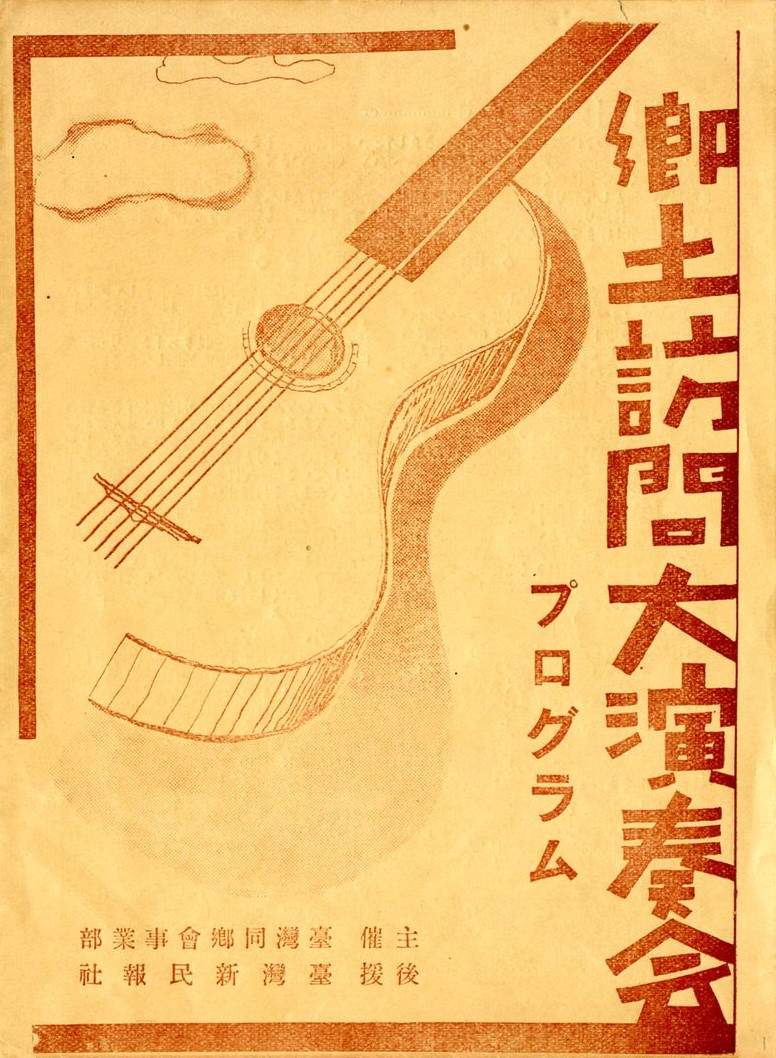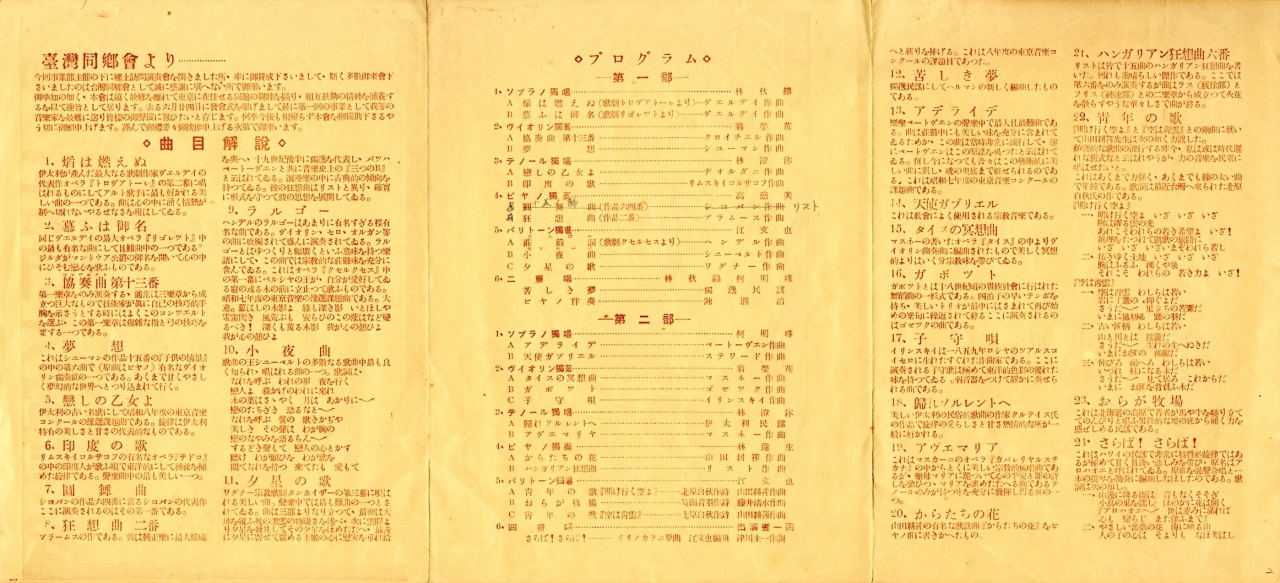|
During the founding assembly of the Taiwanese Association, the artistic performances by Taiwanese students in Japan were met with great acclaim. Inspired by this success, attendees proposed holding a concert during the summer vacation in Taiwan. Yang Zhao-jia immediately expressed his support and volunteered to serve as the chief organizer. He quickly assembled a team, recruiting performers from the assembly, including Gao Ci-mei, Lin Cheng-mu, Weng Rong-mao, Lin Jin-sheng, and Jiang Wen-ye, and inviting additional musicians such as Lin Qiu-jin (林秋錦), Ke Ming-zhu (柯明珠), and Chen Su-ti (陳泗治). This ensemble of eight young Taiwanese musicians, each at the peak of their youth and excelling in their respective fields, included vocalists, pianists, and violinists. Yang Zhao-jia served as the leader of the group. In August 1934, the group returned to Taiwan to prepare for the performances. Yang Zhao-jia led the team to visit the Taiwan Shinminpo news agency to seek support. The unprecedented success of this first music tour, which generated significant public interest and achieved full attendance at every venue, owed much to the vital role played by the Taiwan Shinminpo. This publication was the only newspaper in Taiwan founded independently by the Taiwanese during the Japanese colonial period. Its roots can be traced back to the founding of Taiwan Minbao in 1923, and after ten years of effort, it began publishing daily on April 15, 1932.
Figure 4: Members of the Homecoming Concert Tour at the Taiwan Shinminpo Office in Taipei
Front row, from left: Ke Ming-zhu, Lin Qiu-jin, Yang Zhao-jia, Gao Ci-mei; Back row, from left: Lin Jin-sheng, Xiao Zai-xing (蕭再興), Weng Rong-mao, Chen Su-ti, Jiang Wen-ye, Lin Cheng-mu. Source: The Homecoming Concert Tour at the Taiwan Shinminpo Office (II), Gao Ci-mei Papers (3GCM), 1934, Digital Collection of Archives of Institute of Taiwan History, Academia Sinica. As the co-organizer of the concert, the Taiwan Shinminpo published frequent reports leading up to the event. Starting August 4, 1934, the agency dedicated four consecutive days of extensive coverage, introducing the biographies of the eight performers and their repertoire. The first feature highlighted the youngest member of the group, pianist Gao Ci-mei (1914–2004). Born into a Christian family in Gangshan, Kaohsiung, she was 20 years old at the time of the tour and studying at the Tokyo Imperial Academy of Music. Her repertoire included Chopin’s “Waltz Op. 64” and “Brahms’ Rhapsody Op. 2.” Next were two female vocalists. Lin Qiu-jin (1909–2000), a soprano from Tainan, had studied at the Japan Music School in Nakano, specializing in vocal performance. Having just returned to Taiwan, she began teaching music at Chang Jung Middle School. She performed “Stride la vampa” and “Caro nome”, two iconic arias by Giuseppe Verdi, one of Italy’s greatest opera composers. The second vocalist, Ke Ming-zhu (1911–2002), also from Tainan, was the first Taiwanese to study vocal music in Japan. Recently graduated, she taught music at Tainan Presbyterian Middle School. Her solo pieces included Beethoven’s “Adelaide” and Stewart’s “Angel Gabriel.” The fourth performer, pianist Chen Su-ti (1911–1992), was from Keelung. A graduate of Tamkang High School, he had recently gone to Japan to study composition at a theological school. During the concert, he served as the piano accompanist for the duets of the two female vocalists. The fifth performer, vocalist Lin Cheng-mu (1909–1961), from Tainan, was studying vocal music at the Toyo Music School in Japan, receiving formal music training. His tenor repertoire included “Caro mio ben,” “Song of India,” “Return to Sorrento,” and “Ave Maria.” The sixth performer, pianist Lin Jin-sheng (1901–1960), hailed from Hengchun, Taiwan’s southernmost region. His solo pieces included Kōsaku Yamada’s “Karatachi no Hana” and Liszt’s “Hungarian Rhapsody.” The seventh performer, violinist Weng Rong-mao (19??–1942), came from an influential family in Yizhu, Chiayi. After first encountering the violin while studying at a Presbyterian middle school, he later enrolled in the Toyo Music College. In the year of the Homecoming Concert Tour, he had just represented his school in the New Artists Concert to perform the “Violin Concerto No. 13” and received great accolade. During the tour, he performed solo pieces of famous Western music such as “Violin Concerto No. 13,” “Reverie,” “Méditation from Thaïs,” “Gavotte,” and “Berceuse”Finally, the eighth performer was vocalist and composer Jiang Wen-ye (1910–1983), born in Tamsui. As a child, he dreamed of sailing to explore the world. After studying at the Nakano Music School, he became a student of Kōsaku Yamada, focusing on composition. In 1932, he began working at Columbia Records. During the concert, Jiang Wen-ye performed Handel’s “Largo,” “Serenade,” and “O Star of Eve,” along with “Youth Song,” composed by his mentor. He also arranged the closing number, “Goodbye! Goodbye!,” a quartet featuring all four vocalists.
Figure 5: Performers and Program Notes Published in the Taiwan Shinminpo from August 4 to August 9, 1934
Source: Taiwanese Association Homecoming Tour, Yang Zhao-jia Collection (LJK), 1934, Digital Collection of Archives of Institute of Taiwan History, Academia Sinica. In collaboration with and with support from the Taiwan Shinminpo, the program for the concert, titled The Homecoming Concert Tour Program, was printed. It first outlined the purpose of the event organized by the Taiwanese Association: “This performance marks our first event, where we bring our musicians back to their homeland to perform, in order to repay the support we have received.” The program then listed the order of the performances, with each piece explained in detail. According to the program arrangement, each concert was divided into two parts, with a total of 25 pieces performed.
Figure 6: Program of the Homecoming Concert Tour
Source: Program of the Homecoming Concert Tour, Gao Ci-mei Papers (3GCM), 1934, Digital Collection of Archives of Institute of Taiwan History, Academia Sinica. |
 |


